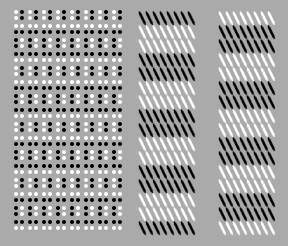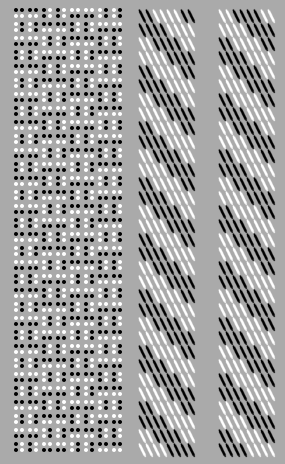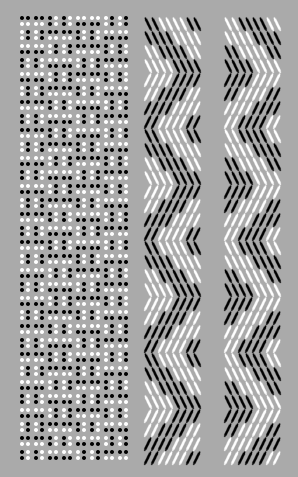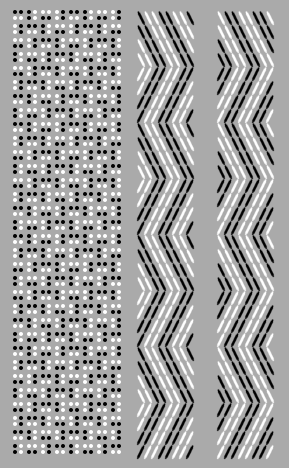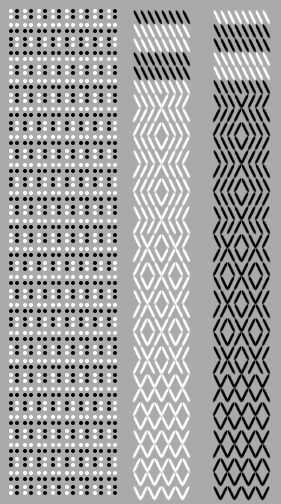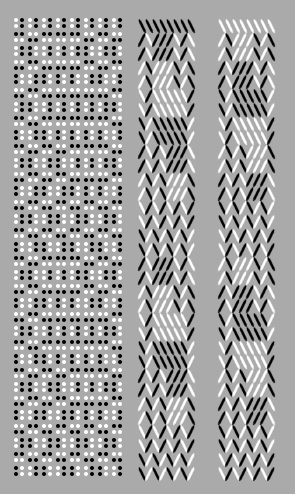After the tablet weaving experiment, here is an attempt at a language/notation for understanding it better. You can have a go here.
Lets start simple:
(weave-forward 16)
The card rotations are shown on the left for each of the 8 cards, the predicted weaving is on the right for the top and bottom of the fabric. This is setup with a double face weaving on square cards, so black, black, white, white in clockwise from the top right corner. (weave-forward 16) turns all the cards a quarter turn and weaves a weft and repeats this 16 times.
We can offset the cards from each other first to make a pattern. rotate-forward turns only the specified cards a quarter turn forward without weaving a weft (rotate-back also works):
(rotate-forward 0 1 2 3 4 5)
(rotate-forward 0 1 2 3)
(rotate-forward 0 1)
(weave-forward 32)
We can’t really weave 32 forward quarter rotates without completely twisting up the warp so lets go forward/back 8 instead to make something physically weavable:
(rotate-forward 0 1 2 3 4 5) (rotate-forward 0 1 2 3) (rotate-forward 0 1) (repeat 4 (weave-forward 4) (weave-back 4))
Now we get a zigzag – if we change the starting pattern again:
(rotate-forward 0 1 2 3 4 5 6) (rotate-forward 0 1 2 3 4 5) (rotate-forward 0 1 2 3 4) (rotate-forward 0 1 2 3) (rotate-forward 0 1 2) (rotate-forward 0 1) (rotate-forward 0) (repeat 4 (weave-forward 4) (weave-back 4))
This zigzag matches the stitch direction better. Instead of the rotation offsets we can also use twist, which is more traditional, you can use it to form any pattern. It takes a list of cards to twist, and results in these cards effectively reversing direction compared to the others.
(weave-forward 7) (twist 0 1 2 3) (weave-back 1) (repeat 2 (weave-forward 2) (weave-back 2)) (weave-forward 1) (twist 2 3 4 5) (weave-back 1) (repeat 2 (weave-forward 2) (weave-back 2)) (weave-forward 1) (twist 1 2 5 6) (weave-back 1) (repeat 2 (weave-forward 2) (weave-back 2))
The twist needs to happen when the cards are in the right rotation – if we repeat this example, but change the first (weave-forward 7) to (weave-forward 6) we get this instead:
If we put the twists in the loops, we can make small programs with complex results:
(weave-forward 1) (twist 0 2 4 6) (repeat 4 (twist 3) (weave-forward 4) (twist 5) (weave-back 4))
